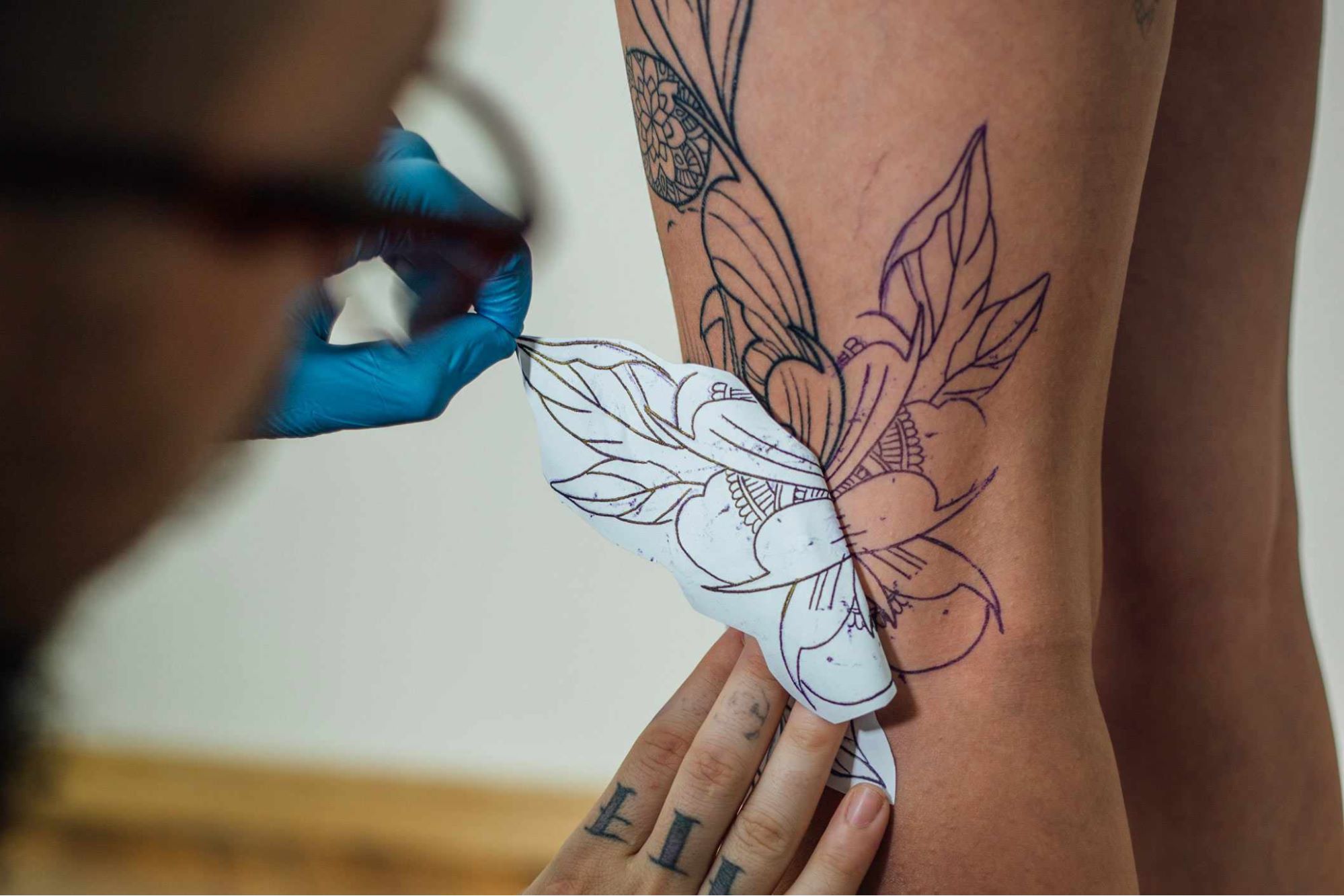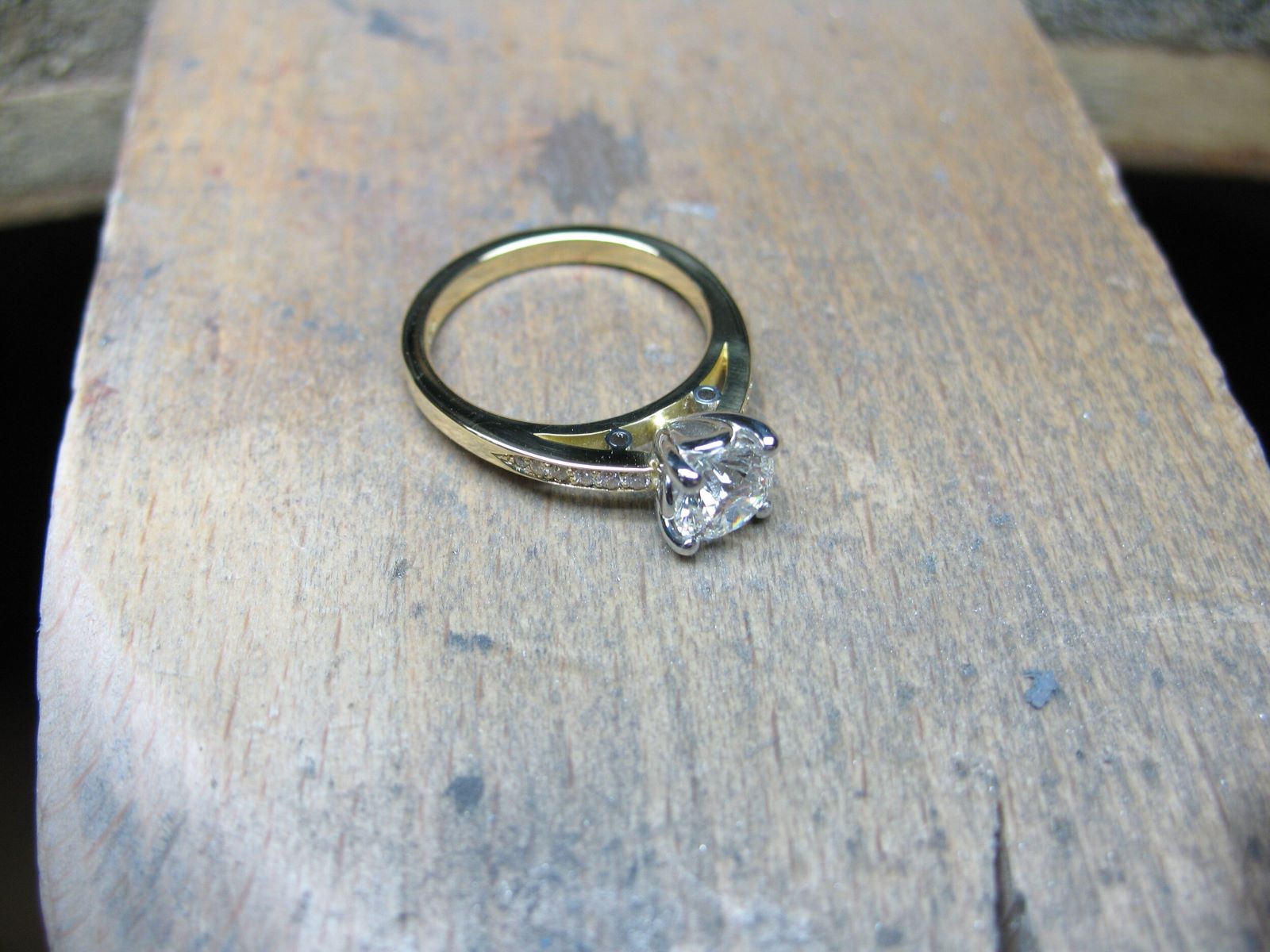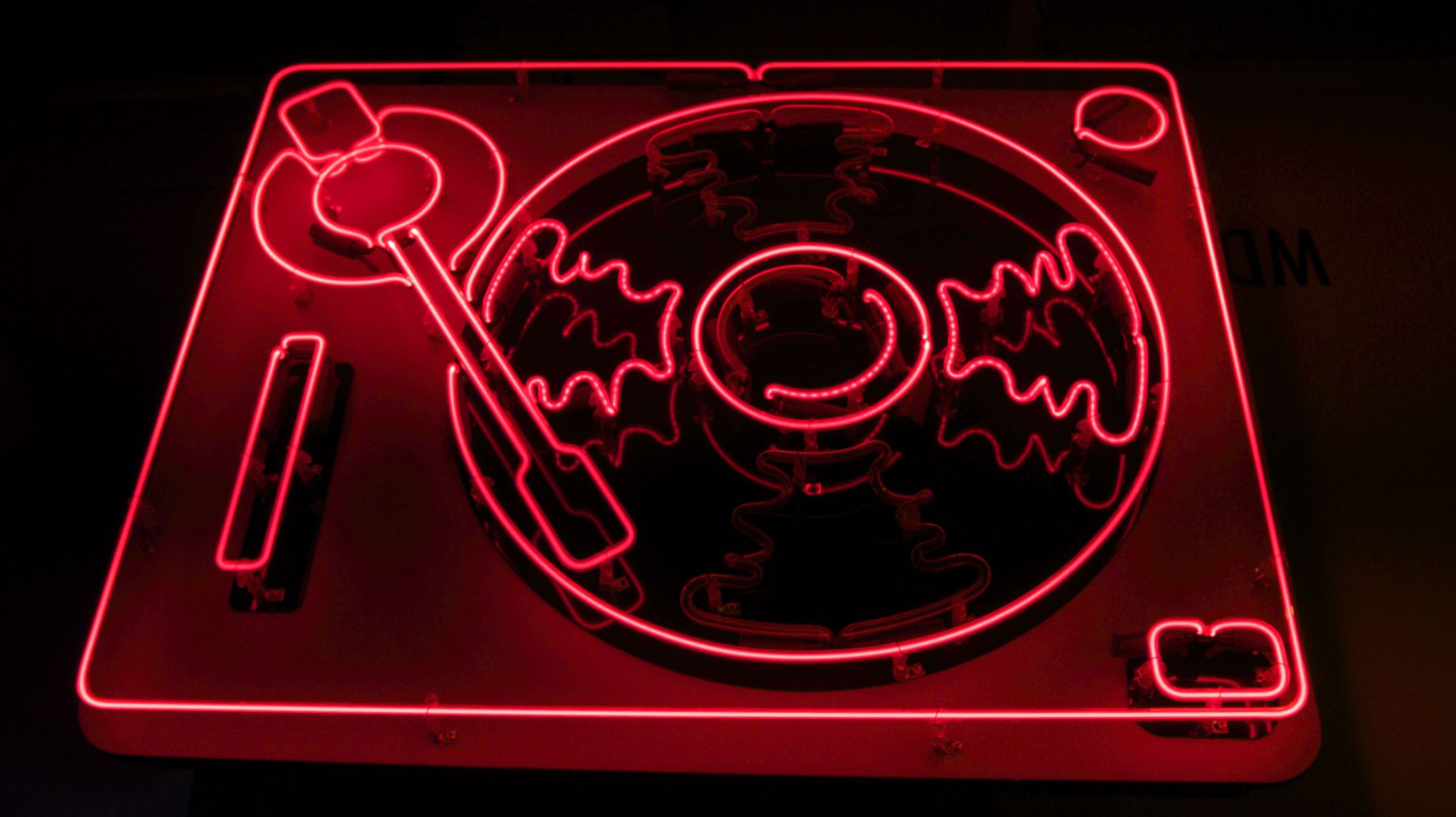Home>Arts and Culture>How To Make A Tattoo Stencil


Arts and Culture
How To Make A Tattoo Stencil
Published: February 29, 2024
Learn the step-by-step process of creating a tattoo stencil, including essential tips and techniques. Explore the art of tattooing in this comprehensive guide. Ideal for enthusiasts of arts and culture.
(Many of the links in this article redirect to a specific reviewed product. Your purchase of these products through affiliate links helps to generate commission for Regretless.com, at no extra cost. Learn more)
Table of Contents
Introduction
Tattoos have been a form of self-expression and art for centuries, with roots tracing back to ancient civilizations. The process of creating a tattoo involves various intricate steps, one of which is making a tattoo stencil. A tattoo stencil serves as a blueprint for the final design, ensuring precision and accuracy during the tattooing process.
Creating a tattoo stencil is a crucial initial step that requires attention to detail and artistic skill. It involves transferring the chosen design onto special stencil paper, which is then applied to the skin before the tattoo artist begins the inking process. This meticulous procedure ensures that the tattoo design is accurately replicated on the skin, allowing the artist to work with precision and bring the envisioned artwork to life.
In this comprehensive guide, we will delve into the intricacies of making a tattoo stencil, from gathering the necessary materials to the step-by-step process of creating and applying the stencil. Whether you are a budding tattoo artist or someone interested in understanding the artistry behind tattoos, this guide will provide valuable insights into the meticulous craft of tattoo stenciling.
Stay tuned as we explore the materials needed, the creative process of designing the stencil, and the precise techniques required to transfer and apply the stencil to the skin. Let's embark on this artistic journey and unravel the art of making a tattoo stencil, where creativity and precision converge to set the stage for a stunning tattoo masterpiece.
Read more: How To Remove Tattoos At Home
Materials Needed
To embark on the journey of creating a tattoo stencil, it is essential to gather the requisite materials that form the foundation of this artistic process. Each item plays a crucial role in ensuring the precision and quality of the stencil, ultimately contributing to the successful execution of the tattoo design. Here are the essential materials needed to commence the creation of a tattoo stencil:
-
Design Template: The design template serves as the visual representation of the desired tattoo. Whether it's a custom design or a pre-existing artwork, having a clear and detailed design template is fundamental to the stencil creation process. This can be a hand-drawn sketch, a digital illustration, or a printed image that encapsulates the envisioned tattoo design.
-
Stencil Paper: A key component in the stencil-making process, stencil paper is specifically designed to transfer the tattoo design onto the skin with precision. It is important to use high-quality stencil paper that allows for accurate tracing and smooth transfer of the design. Stencil paper comes in various types, including thermal and hectograph, each with its unique properties suited for different tattooing techniques.
-
Stencil Transfer Solution: This specialized solution is used in conjunction with the stencil paper to facilitate the transfer of the design onto the skin. It ensures that the stencil adheres firmly to the skin surface, enabling the tattoo artist to work seamlessly without smudging or distortion. The transfer solution is a vital element in achieving a clear and well-defined stencil on the skin.
-
Fine-tipped Pens or Markers: Precision is paramount when tracing the design onto the stencil paper. Fine-tipped pens or markers, preferably with waterproof and smudge-resistant ink, are indispensable for accurately outlining the intricate details of the tattoo design. These tools enable the artist to capture the nuances of the design with meticulous precision, ensuring that every line and contour is faithfully reproduced on the stencil.
-
Tape or Stencil Application Spray: Securing the stencil onto the skin during the tattooing process is essential to maintain the integrity of the design. Tape or stencil application spray provides the necessary adhesion to keep the stencil in place, allowing the artist to work with confidence and accuracy. The choice between tape and spray depends on the artist's preference and the specific requirements of the tattoo design.
-
Clean Cloth or Paper Towels: Maintaining a clean and sterile working environment is imperative in the tattooing process. A clean cloth or paper towels are used to gently pat and press the stencil onto the skin, ensuring that it adheres firmly and uniformly. Additionally, they are utilized to remove any excess transfer solution, resulting in a pristine and well-defined stencil ready for the tattooing phase.
Assembling these essential materials forms the cornerstone of the tattoo stencil creation process, laying the groundwork for the meticulous and artistic journey that awaits. With these tools at hand, the next step involves channeling creativity and precision to bring the envisioned tattoo design to life through the intricate art of stencil-making.
Creating the Design
The process of creating a tattoo stencil begins with the pivotal stage of designing the artwork that will adorn the skin. This phase is a harmonious blend of artistic vision, creativity, and technical skill, where the chosen design is meticulously translated onto the stencil paper. Whether it's a custom creation or a reinterpretation of existing artwork, the design phase sets the stage for the entire tattooing process, shaping the visual narrative that will be etched onto the skin.
The journey of creating the design unfolds with a deep exploration of the client's vision or the artist's creative inspiration. It often involves in-depth consultations, where the artist delves into the client's preferences, personal significance, and aesthetic aspirations. This collaborative exchange of ideas and concepts forms the bedrock of the design process, allowing the artist to craft a bespoke tattoo that resonates with the individual's unique story and identity.
Once the design concept is crystallized, the artist channels their artistic prowess to bring the envisioned tattoo to life. This may involve sketching the design by hand, digitally illustrating it using specialized software, or adapting existing artwork to suit the client's preferences. Every line, curve, and detail is meticulously crafted, with careful consideration given to the placement and flow of the design on the body, ensuring a harmonious integration with the natural contours and features.
Precision and attention to detail are paramount during the design phase, as the artist strives to capture the essence of the envisioned tattoo with artistic finesse. Whether it's a minimalist symbol, an intricate portrait, or a vibrant composition, the design process is a testament to the artist's ability to translate imagination into tangible art. Each element of the design, from intricate patterns to subtle shading, is thoughtfully curated to convey the desired emotions and symbolism, infusing the artwork with depth and meaning.
Throughout this creative journey, the artist collaborates closely with the client, seeking feedback and insights to refine the design and ensure that it authentically reflects their vision. This iterative process of refinement and fine-tuning culminates in the realization of a captivating and personalized tattoo design, ready to be transposed onto the stencil paper as the next step in the intricate art of tattoo stenciling.
The design phase encapsulates the essence of artistic expression and storytelling, where the fusion of creativity and technical skill gives rise to a visual masterpiece that will adorn the skin. It sets the stage for the subsequent stages of stencil creation and tattooing, laying the foundation for a transformative and deeply meaningful artistic journey.
Preparing the Stencil Paper
Preparing the stencil paper is a critical precursor to the precise transfer of the tattoo design onto the skin. This meticulous process involves priming the stencil paper to ensure optimal adherence and clarity during the transfer, setting the stage for the seamless translation of the intricate design onto the skin canvas.
The first step in preparing the stencil paper involves ensuring a clean and smooth surface for the design transfer. Any debris or imperfections on the stencil paper can impede the accuracy of the transfer, potentially compromising the integrity of the final stencil. Therefore, gently wiping the stencil paper with a clean, lint-free cloth helps to remove any dust or particles, creating a pristine foundation for the upcoming tracing process.
Once the surface is immaculate, the next crucial aspect of preparing the stencil paper is assessing the dimensions and orientation of the tattoo design. This involves carefully aligning the stencil paper with the chosen design template, ensuring that it accommodates the entire artwork while allowing for a comfortable application on the skin. Attention to detail at this stage is paramount, as it sets the framework for the accurate replication of the design during the tattooing process.
After aligning the stencil paper with the design template, securing it in place is essential to prevent any shifting or misalignment during the tracing process. This can be achieved through the use of gentle adhesive tape or stencil application spray, which provides a stable foundation for the precise transfer of the design. The secure fixation of the stencil paper not only facilitates the tracing process but also ensures that the design remains intact and aligned throughout the application on the skin.
Furthermore, ensuring that the stencil paper is taut and free of wrinkles or creases is imperative to maintain the clarity and precision of the transferred design. Smooth, wrinkle-free stencil paper serves as a conducive medium for capturing the intricate details of the tattoo design, allowing for a seamless and accurate transfer onto the skin surface.
By meticulously preparing the stencil paper with attention to cleanliness, alignment, fixation, and smoothness, the stage is set for the next pivotal phase: transferring the meticulously crafted tattoo design onto the pristine canvas of the stencil paper. This preparatory process lays the groundwork for the seamless translation of artistic vision onto the skin, embodying the fusion of creativity and precision inherent in the art of tattoo stenciling.
Transferring the Design onto the Stencil Paper
Transferring the meticulously crafted tattoo design onto the stencil paper is a pivotal stage that demands precision and finesse. This intricate process serves as the bridge between the conceptualization of the design and its tangible manifestation on the skin, requiring meticulous attention to detail and a steady hand to ensure an accurate and faithful transfer.
The transfer process commences with the careful positioning of the design template over the prepared stencil paper. Aligning the two elements with precision is essential to ensure that every detail of the design is captured and transferred accurately. Once the alignment is perfected, the artist meticulously traces the contours, lines, and intricate elements of the design using fine-tipped pens or markers. This delicate tracing process demands unwavering focus and a keen eye for detail, as every stroke contributes to the faithful replication of the envisioned tattoo onto the stencil paper.
As the design is meticulously traced onto the stencil paper, the artist pays meticulous attention to capturing the nuances and intricacies of the artwork, ensuring that every subtle detail is faithfully reproduced. From intricate patterns to delicate shading, each element is meticulously transposed onto the stencil paper, preserving the artistic integrity of the original design.
Throughout the tracing process, the artist maintains a steady hand and exercises precision, ensuring that the lines are crisp, the contours are well-defined, and the overall design is faithfully represented. This meticulous approach is essential to creating a clear and precise stencil that will serve as the blueprint for the final tattoo, guiding the artist with accuracy and clarity during the inking process.
Upon completing the tracing process, the artist meticulously inspects the transferred design, ensuring that every element is accurately captured and that the stencil reflects the intricacies of the original artwork. Any imperfections or inconsistencies are carefully addressed, reaffirming the commitment to delivering a flawless and precise stencil that will serve as the foundation for the upcoming tattooing phase.
The culmination of the transfer process marks the realization of the tattoo design on the stencil paper, encapsulating the fusion of artistic vision and technical skill. This meticulously crafted stencil now stands as a testament to the artist's dedication to precision and artistry, setting the stage for the transformative journey of bringing the envisioned tattoo to life on the skin.
This meticulous transfer process embodies the essence of the art of tattoo stenciling, where creativity and precision converge to create a tangible representation of artistic vision, laying the groundwork for the transformative and deeply meaningful process of tattooing.
Read more: How To Make Gray
Cutting Out the Stencil
Once the meticulously traced tattoo design adorns the stencil paper, the next crucial step in the stencil-making process unfolds: cutting out the stencil with precision and finesse. This meticulous phase requires a steady hand, keen attention to detail, and a delicate touch to ensure that the stencil is crafted with accuracy and clarity, ready to serve as the guiding template for the tattooing process.
The artist embarks on this intricate task by delicately outlining the perimeter of the transferred design on the stencil paper. Using fine-tipped precision scissors or specialized cutting tools, the artist meticulously follows the contours of the design, ensuring that every curve, line, and detail is faithfully preserved. This delicate cutting process demands unwavering focus and a steady hand, as any deviation from the traced design could compromise the integrity of the stencil.
As the artist meticulously navigates the intricate contours of the design, the precision of the cutting process is paramount. Every incision is executed with meticulous care, ensuring that the edges are crisp and the details are preserved with utmost accuracy. This meticulous approach is essential to crafting a clean and well-defined stencil that will serve as the blueprint for the final tattoo, guiding the artist with precision and clarity during the inking process.
Furthermore, the artist pays close attention to the intricacies of the design, ensuring that any intricate patterns, delicate shading, or fine details are meticulously preserved during the cutting process. This meticulous approach is instrumental in capturing the artistic nuances of the original design, ensuring that the final stencil faithfully represents the envisioned tattoo with unparalleled precision.
Upon completing the delicate cutting process, the artist meticulously inspects the crafted stencil, ensuring that every element is accurately preserved and that the edges are clean and well-defined. Any imperfections or irregularities are carefully addressed, reaffirming the commitment to delivering a flawless and precise stencil that embodies the intricacies of the original artwork.
The culmination of the cutting process marks the realization of a meticulously crafted stencil, a testament to the artist's dedication to precision and artistry. This meticulously crafted stencil now stands as the definitive blueprint for the upcoming tattooing phase, embodying the fusion of creativity and technical skill that defines the art of tattoo stenciling.
This meticulous cutting process encapsulates the essence of the art of tattoo stenciling, where precision and artistry converge to create a tangible representation of the envisioned tattoo, setting the stage for the transformative and deeply meaningful process of tattooing.
Applying the Stencil to the Skin
The culmination of the meticulous process of creating a tattoo stencil leads to the pivotal moment of applying the crafted stencil to the skin. This transformative phase marks the convergence of artistic vision and technical precision, where the meticulously crafted stencil serves as the guiding template for the intricate art of tattooing. The application of the stencil to the skin is a delicate and precise process that sets the stage for the realization of the envisioned tattoo, embodying the fusion of creativity and meticulous execution.
As the artist prepares to apply the stencil to the skin, ensuring a clean and sanitized skin surface is paramount. The designated area for the tattoo is gently cleansed and sanitized, removing any traces of oils or residues that could impede the adherence of the stencil. This preparatory step sets the foundation for a seamless application, ensuring that the stencil adheres firmly and uniformly to the skin.
With the skin surface primed, the artist carefully positions the meticulously crafted stencil over the designated area, aligning it with precision to ensure that the design is placed exactly as envisioned. Attention to detail at this stage is crucial, as the accurate placement of the stencil sets the framework for the precise execution of the tattoo design.
Once the stencil is aligned with the skin, the artist gently presses it onto the surface, ensuring that it adheres uniformly and securely. This meticulous process involves using a clean cloth or paper towel to gently pat and press the stencil, ensuring that every detail of the design is transferred with clarity and precision. The artist meticulously inspects the applied stencil, confirming that every line, contour, and intricate element is faithfully represented on the skin.
The secure application of the stencil sets the stage for the transformative journey of tattooing, providing the artist with a clear and precise blueprint to bring the envisioned design to life. The meticulously crafted stencil serves as the guiding framework, allowing the artist to work with confidence and accuracy, ensuring that every stroke of the tattoo needle captures the essence of the design with unparalleled precision.
The application of the stencil to the skin embodies the essence of the art of tattooing, where the fusion of creativity and technical skill converges to create a tangible representation of artistic vision. This transformative phase sets the stage for the intricate and deeply meaningful process of tattooing, where the meticulously crafted stencil serves as the conduit through which the envisioned artwork is brought to life on the skin.
This meticulous process encapsulates the artistry and precision inherent in the application of a tattoo stencil, setting the stage for the transformative journey of tattooing, where creativity and technical skill converge to create enduring works of art on the canvas of the skin.














